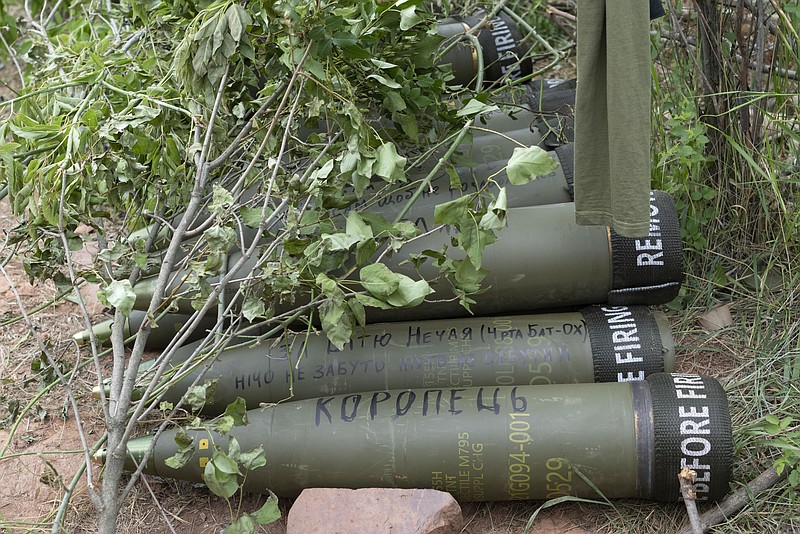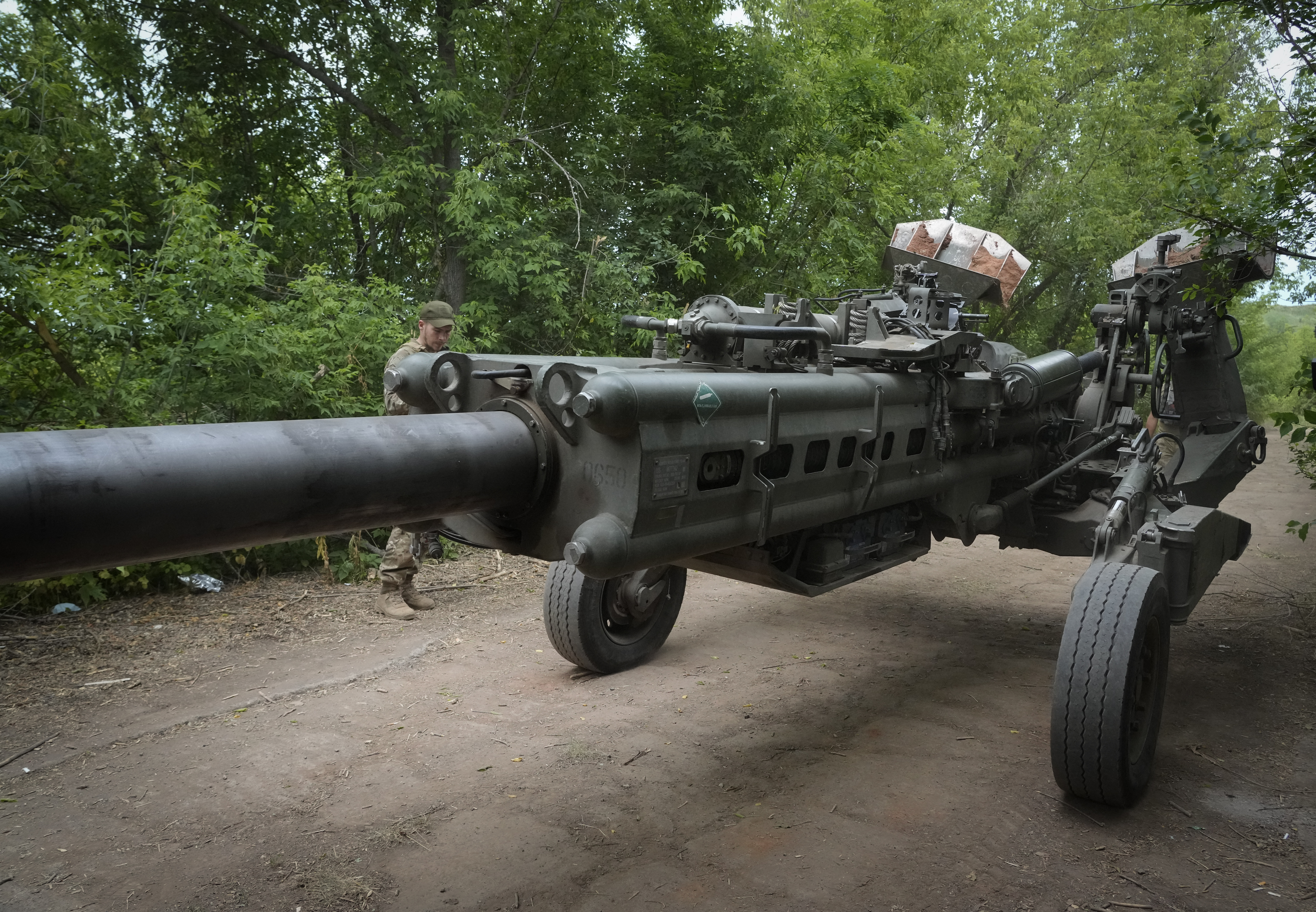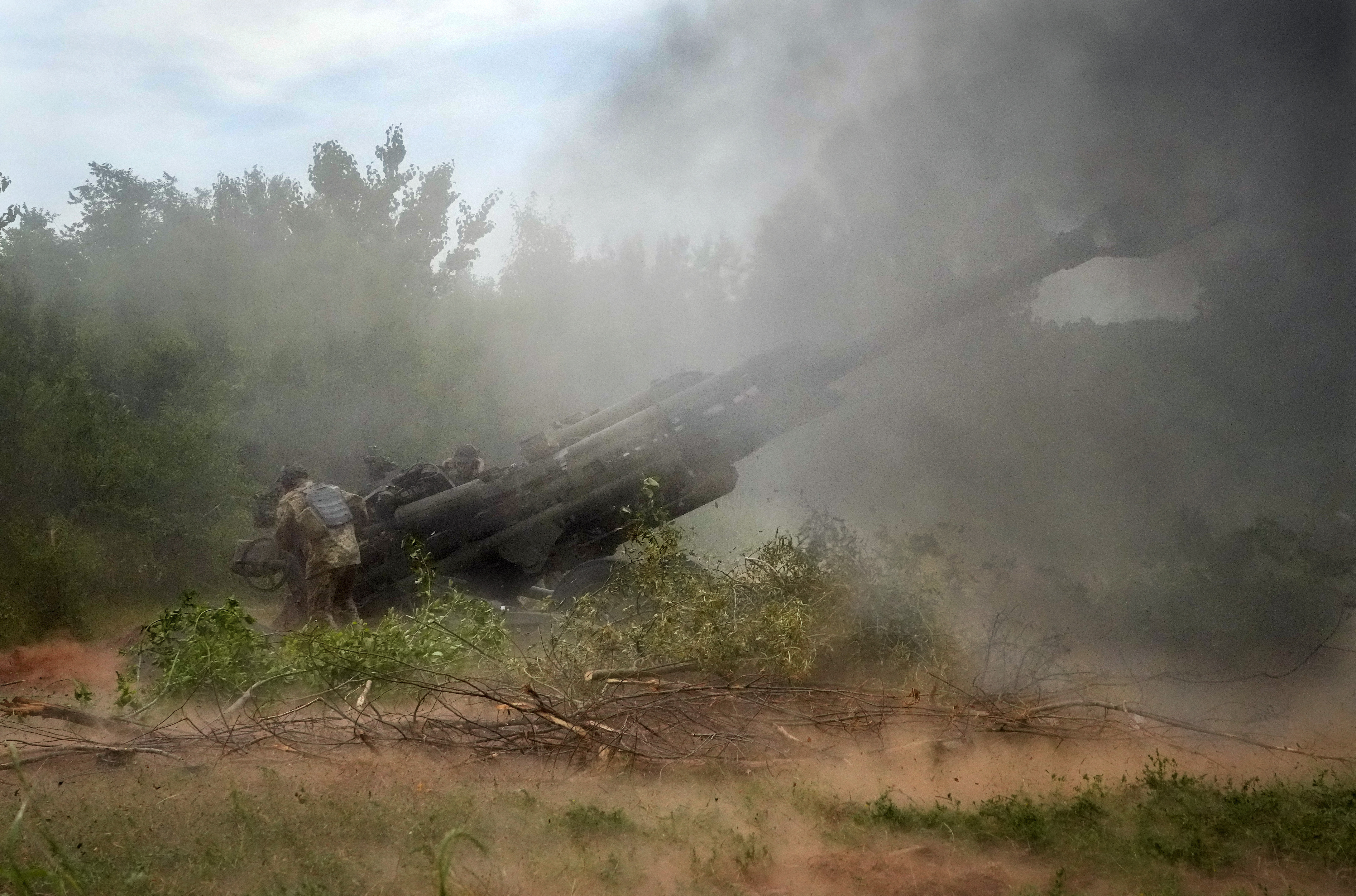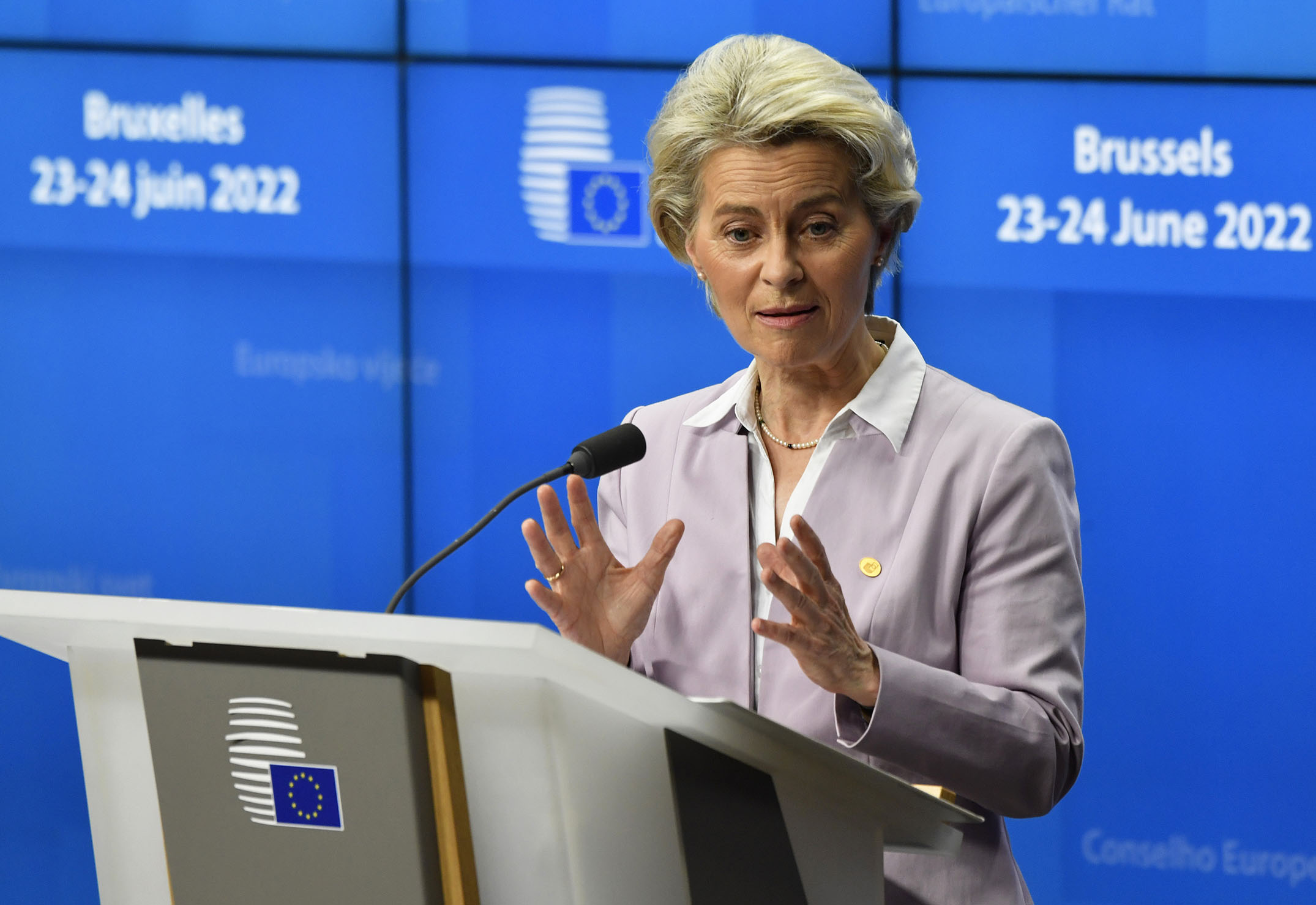WASHINGTON -- The United States will send another $450 million in military aid to Ukraine, including some additional medium-range rocket systems, to help push back Russian progress in the war, officials announced Thursday.
The latest package includes four High Mobility Artillery Rocket Systems, which will double the number they have now. All four were prepositioned in Europe, and training on those systems has already begun with the Ukrainian troops who will use them, said Marine Corps Lt. Col. Anton Semelroth, a Pentagon spokesman. The first four rocket systems that the U.S. previously sent have already gone into Ukraine and are in the hands of troops there.
According to the Pentagon, the aid also includes 18 tactical vehicles that are used to tow howitzers, so the weapons can be moved around the battlefield, as well as 18 coastal and riverine patrol boats, thousands of machine guns, grenade launchers and rounds of ammunition, and some other equipment and spare parts.
The new aid comes a little over a week after the U.S. announced it was sending $1 billion in military aid to Ukraine, and as the Russian military continues to slowly expand its control in the eastern Donbas region. Ukrainian leaders have persistently asked for the more advanced, precision rocket systems in order to better fight back against Russia.
Russian forces have been bombarding the city of Sievierodonetsk for weeks with artillery and air raids, and fought the Ukrainian army house-to-house. The new rocket systems give Ukraine the ability to strike Russian forces and weapons from farther away, making it less risky for Ukrainian troops. The systems are mounted on trucks, which carry a container with six precision-guided rockets that can travel about 45 miles.
It took about three weeks to train Ukrainian troops on the first four High Mobility Artillery Rocket Systems, before the systems were moved to the fight.
The aid is part of the $40 billion in security and economic assistance passed last month by Congress and signed into law by President Joe Biden. And it is the 13th package of military weapons and equipment committed to Ukraine since the war began.
Overall, since the war started in late February, the U.S. has committed about $6.1 billion in security assistance to Ukraine, including this latest package. The $450 million in equipment and weapons will be from drawdown authority, which means the Defense Department will take it all from its own stocks and ship it to Ukraine.
RUSSIA ADVANCES
On the battlefield, the Russian military extended its grip on territory in eastern Ukraine as it seeks to cut supply lines and encircle frontline Ukrainian forces.
Ukrainian forces withdrew from some areas near the city of Lysychansk to avoid being surrounded as Russians sent in reinforcements and concentrated their firepower in the area, Britain's Defense Ministry said. The city is located in Luhansk province, a major battlefield in the war.
Ukraine's General Staff said Russian forces took control of the villages of Loskutivka and Rai-Oleksandrivka, and were trying to capture Syrotyne, a settlement outside the province's urban administrative center, Sievierodonetsk. Luhansk Gov. Serhiy Haidai told reporters that the Russians were "burning everything out" in their offensive to encircle Ukraine's fighters.
"The Russians are advancing without trying to spare the ammunition or troops, and they aren't running out of either," Haidai said. "They have an edge in heavy artillery and the number of troops."
In the Luhansk region, Ukrainians remain in control of part of the territory, "defying the Russians and causing their fury and desire to burn it to the ground," Haidai said.
Ukrainian forces remain holed up with about 500 civilians at the Azot chemical plant, the only part of Sievierodonetsk still under Ukrainian control.
Haidai said the Ukrainian soldiers warded off the city's seizure from the plant's sprawling underground structures, but he noted that "the shelling has intensified, and even concrete shelters can't withstand the bombardment." The Russians were using their entire arsenal -- heavy artillery, tanks and aircraft -- he said.
Lysychansk, located on a steep river bank facing Sievierodonetsk, also faces a relentless Russian artillery barrage. At least one civilian died and three others were wounded in 24 hours as the Russians concentrated more than 100 multiple rocket launchers to "pummel entire blocks," the governor said.
The British Defense Ministry said Russian forces had likely advanced more than 3 miles toward the southern approaches of Lysychansk since Sunday.
"Some Ukrainian units have withdrawn, probably to avoid being encircled," the statement said. "Russia's improved performance in this sector is likely a result of recent unit reinforcement and heavy concentration of fire."
Ukraine's military said the Russians were also moving to overtake the hills overlooking a highway linking Lysychansk with Bakhmut, to the southwest, in an attempt to cut the supply lines of Ukrainian forces.
Haidai said the Bakhmut-Lysychansk highway wasn't used because of heavy Russian shelling. Ukrainian forces are receiving supplies via an alternative route.
After a botched attempt to capture Kyiv, Ukraine's capital, in the early stage of the invasion on Feb. 24, Russian forces shifted focus to the Donbas region, where the Ukrainian forces have fought Moscow-backed separatists since 2014.
The Russian military controls about 95% of Luhansk province and about half of neighboring Donetsk province, the two areas that make up the Donbas.
FAST-TRACK TO EU
The European Union agreed Thursday to put Ukraine on a path toward EU membership, acting with uncharacteristic speed and unity to pull the embattled country further away from Russia's influence and bind it more closely to the West.
Meeting at a summit in Brussels, leaders of the EU's 27 nations mustered the required unanimous approval to grant Ukraine candidate status. That sets in motion a membership process that could take years or even decades.
Ukrainian President Volodymyr Zelenskyy tweeted his gratitude and declared: "Ukraine's future is within the EU."
"It's a victory. We have been waiting for 120 days and 30 years," he said on Instagram, referring to the duration of the war and the decades since Ukraine became independent upon the breakup of the Soviet Union. "And now we will defeat the enemy."
European Commission President Ursula von der Leyen pronounced it a "good day for Europe."
There was no immediate reaction from the Kremlin.
The EU also gave candidate status to the tiny country of Moldova, another former Soviet republic that borders Ukraine.
Ukraine applied for membership less than a week after Moscow invaded on Feb. 24. Thursday's decision was unusually rapid for the EU and its go-slow approach to expansion. But the war and Ukraine's request for fast-track consideration lent urgency to the cause.
To gain EU membership, countries must meet a detailed host of economic and political conditions, including a commitment to the rule of law and other democratic principles. Ukraine will have to curb entrenched government corruption and adopt other laws.
"It will strengthen Ukraine, it will strengthen Europe. It is a decision for freedom and democracy and puts us on the right side of history," European Parliament President Roberta Metsola said ahead of the final decision.
EU candidate status doesn't provide any immediate security guarantees. Once a country gains membership, however, it is covered under an EU treaty clause that says if a member falls victim to armed aggression, the other EU countries are obligated to assist it by all means in their power.
The main benefits of EU membership, though, are economic, since it gives access to a market of 450 million consumers with free movement of labor, goods, services and capital.
The EU's leaders also agreed Thursday to recognize a "European perspective" for yet another former Soviet republic, Georgia. European Council President Charles Michel said the EU will be ready to approve its candidate status once "outstanding priorities" are addressed.
European officials have said that Ukraine has already adopted about 70% of the EU rules and standards, but they also have pointed to the need for other far-reaching measures.
Information for this article was contributed by Lolita C. Baldor, Samuel Petrequin, Mike Corder, John Leicester, David Keyton, Yuras Karmanau, Tina Goldenberg, Suzan Fraser and Matthew Lee of The Associated Press.
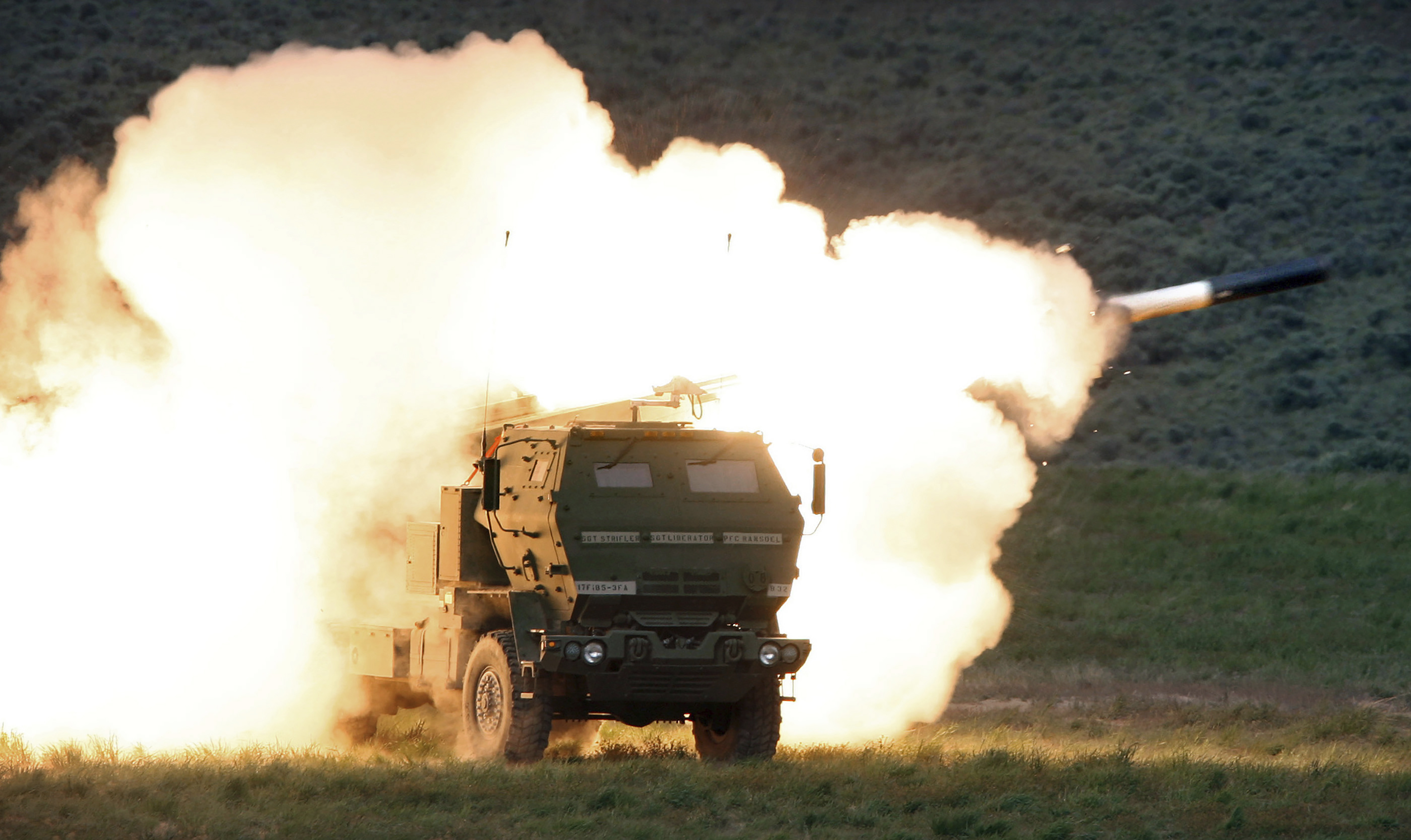 FILE - In this May 23, 2011, file photo a launch truck fires the High Mobility Artillery Rocket System (HIMARS) produced by Lockheed Martin during combat training in the high desert of the Yakima Training Center, Wash. U.S. officials will send another $450 million in military aid to Ukraine, including some additional medium-range rocket systems. The latest package will include a number of High Mobility Artillery Rocket Systems, or HIMARS. (Tony Overman/The Olympian via AP, File)
FILE - In this May 23, 2011, file photo a launch truck fires the High Mobility Artillery Rocket System (HIMARS) produced by Lockheed Martin during combat training in the high desert of the Yakima Training Center, Wash. U.S. officials will send another $450 million in military aid to Ukraine, including some additional medium-range rocket systems. The latest package will include a number of High Mobility Artillery Rocket Systems, or HIMARS. (Tony Overman/The Olympian via AP, File)Gallery: Images from Ukraine, month 4

